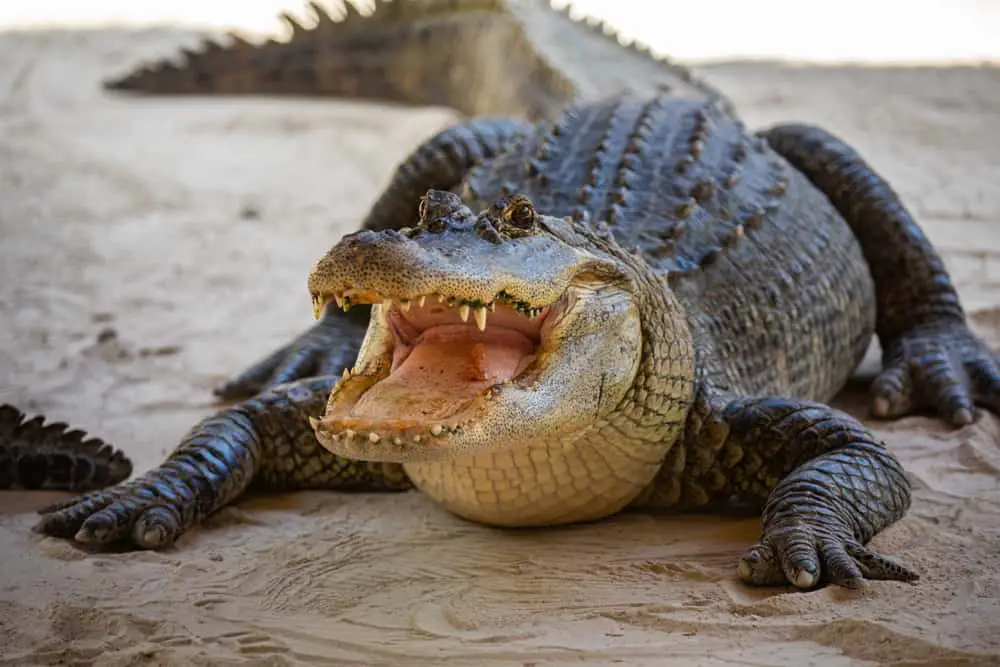
Alligators are well-known members of the crocodilian species and are usually found in the southeastern part of the United States. They thrive in a habitat of marshes, freshwater swamps, lakes, rivers, and small bodies of water. Younger alligators usually enjoy a diet that includes small fish, frogs, and insects, while adult alligators feast on small mammals, birds, turtles, fish, and even small alligators.
They usually don’t like to leave their habitat unless there is a dry season, which may cause them to move closer to human habitats. Humans are discouraged from feeding alligators because it causes alligators to be less wary of humans, making them more likely to attack. The average alligator can grow to be 14.7 ft and can weigh as much as 990 lb with an average life expectancy of 50 years.
There are many members of the crocodilian species, and they are often mistakenly called alligators. Keep reading to learn more about other members of the crocodilian species who are often mistaken for alligators.
Table of Contents
- Spectacled Caiman
- American Crocodile
- Slender-Snouted Crocodile
- Orinoco Crocodile
- Philippine Crocodile
- Morelet’s Crocodile
- Nile Crocodile
- New Guinea Crocodile
- Mugger
- Estuarine Crocodile
- Cuban Crocodile
- Siamese Crocodile
- African Dwarf Crocodile
- False Gharial
- Broad-Snouted Caiman
- Yacare Caiman
- Black Caiman
Spectacled Caiman
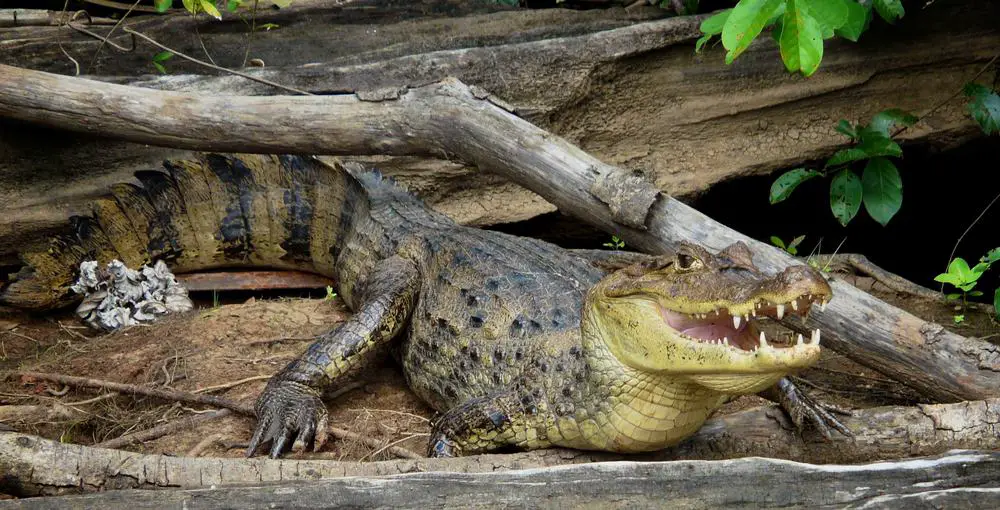
Also known as the brown caiman, the spectacled caiman can be found in various parts of South America, and although they are very adaptable, they prefer areas of stillwater, wetland, and riverine habitats. They differ from alligators because they are only aggressive during mating season and they only grow up to 8.2 ft, can weigh up to 128 lb, and live up to 40 years.
They typically enjoy the same diet as alligators as they enjoy consuming turtles, fish, mammals and amphibians.
American Crocodile
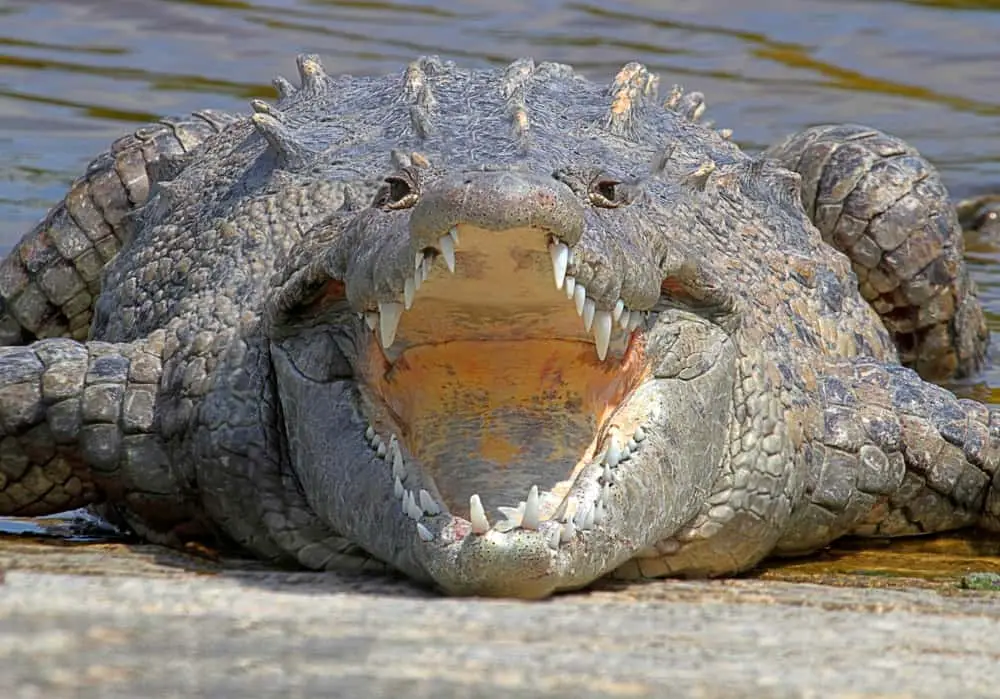
Like alligators, American crocodiles can be found in the coastal areas of South Florida, but differ from alligators because they enjoy a habitat of coves, ponds, and creeks. They are unlikely to have conflict with humans because of their shy nature, and they can grow up to 15 ft long, weigh as much as 2,000 lb, and live up to 70 years.
They also enjoy a diet of small mammals, birds, frogs, fish, and turtles.
Slender-Snouted Crocodile
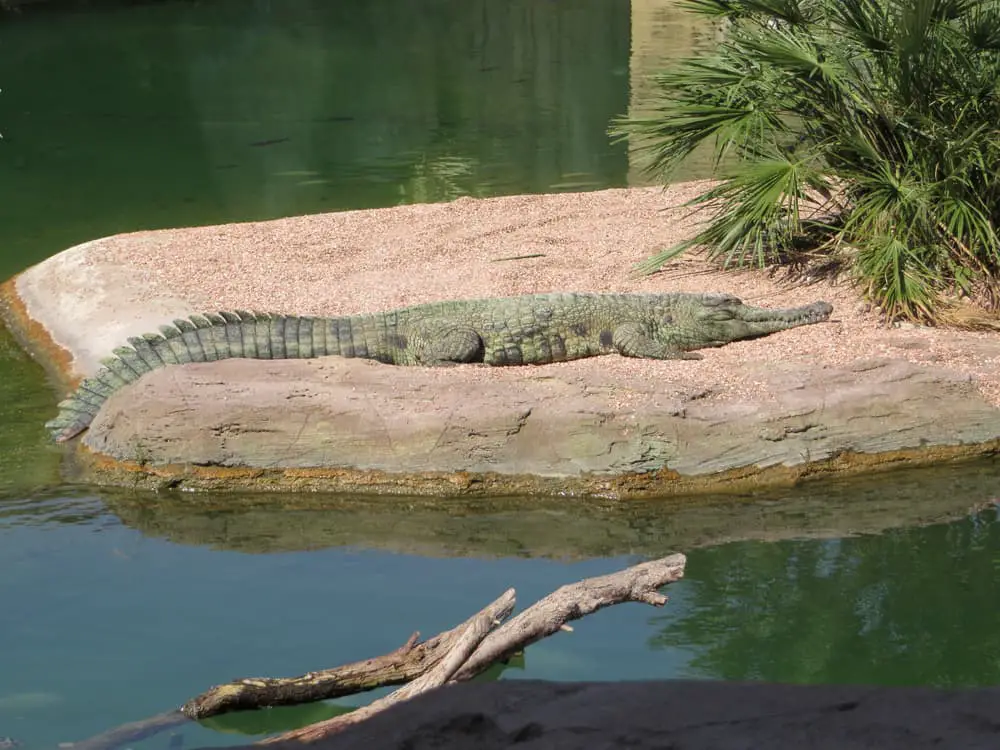
The slender-snouted crocodile is found in Central and West Africa and, similar to alligators, prefers a freshwater habitat, mainly in rivers and lakes.
Their diet consists mainly of crustaceans and fish, and they can grow as long as 13.1 ft, weigh as much as 717 lb, and can live up to 40 years, unlike alligators who can live up to 50 years. This crocodile is rare because they climb trees and are more vocal than most of the crocodilian species, growling and bellowing at other crocodiles with a banging sound.
Orinoco Crocodile
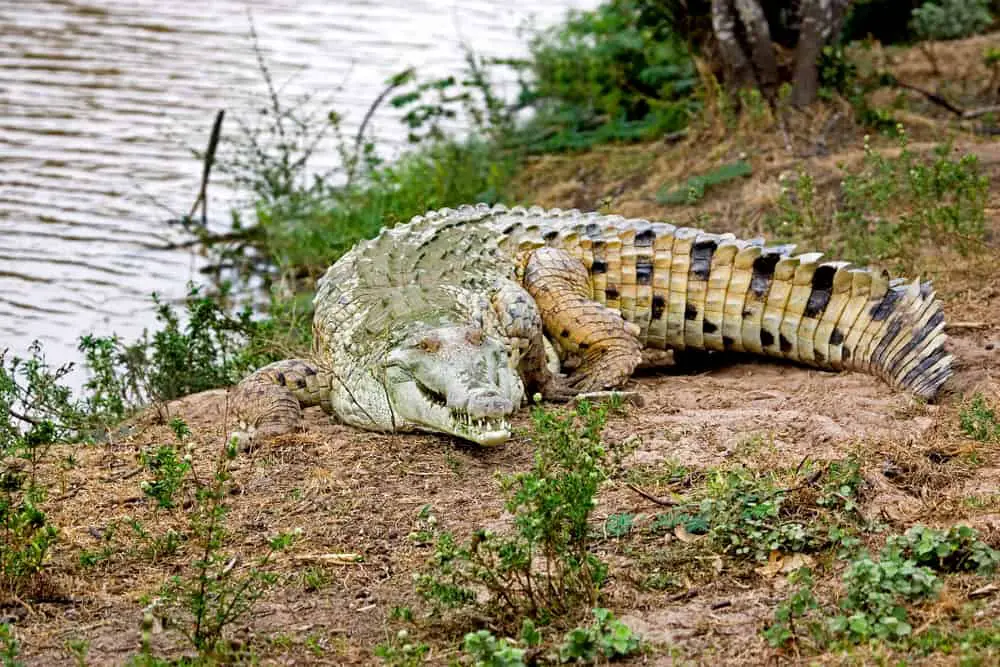
Unlike alligators, orinoco crocodiles have a very small population and can only be found in Columbia and Venezuela, particularly in the Orinoco River and its surrounding bodies of water, and they prefer a habitat of quiet lagoons with fresh water.
Although there is little study about their dietary preferences, eye-witness accounts suggest that the orinoco crocodile has a diet that mainly consists of large fish, which alligators also enjoy, and it contributes to their growth of as long as 16 ft, an average weight of 440 lb, and they can live up to 80 years.
These crocodiles are very social, have a well-developed communication system, and are typically very slow except when they are eating.
Philippine Crocodile
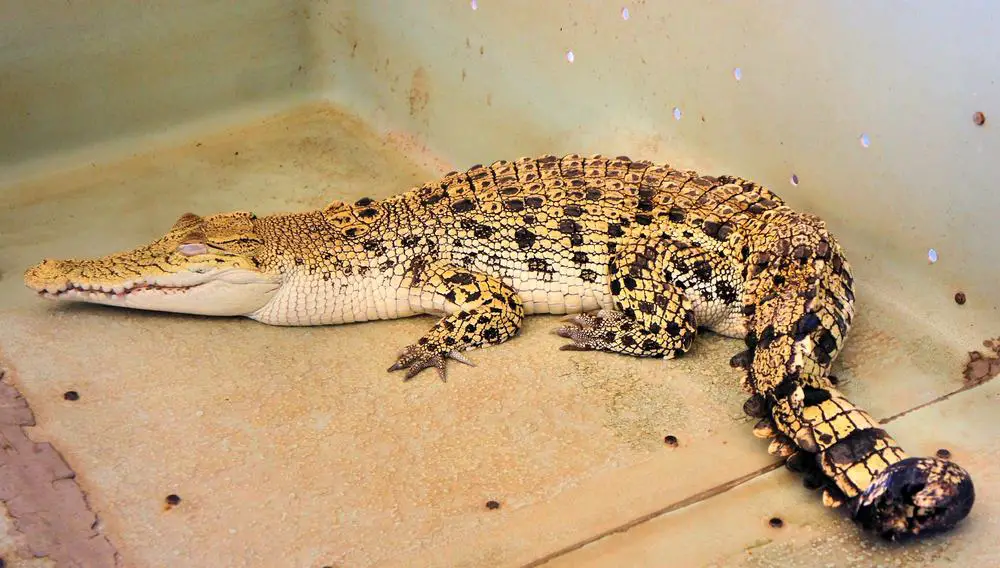
Historically found throughout the Philippine Islands, the Philippine crocodile is one of the most endangered freshwater crocodiles and thrives in a habitat of freshwater marshes, ponds, and rivers, much like alligators. They enjoy a diet of invertebrates, fish, reptiles, and small amphibians, and greatly differ in size from alligators, as they can grow as long as 4.9 ft, weigh as much as 33 lb, and are estimated to live up to 80 years.
These crocodiles can float on the surface of water, like to warm up by resting in the sun, and open their mouths to release heat when they become too hot.
Morelet’s Crocodile
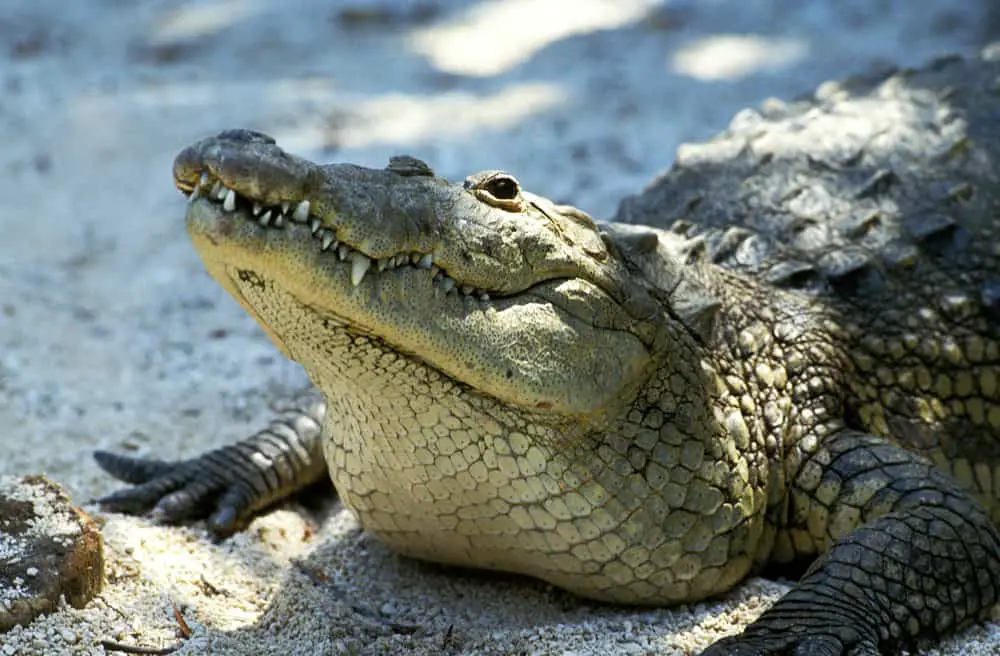
Also known as the Mexican crocodile, morelet’s crocodile can only be found in the Atlantic regions of Mexico, Belize, and Guatemala, and similar to alligators, they prefer a habitat of freshwater swamps and marshes, as well as forested riparian habitats. Their diet includes small invertebrates and fish for juveniles, fish, aquatic snails and mammals for sub-adults, and turtles, lizards, fish, birds, and domestic animals such as dogs for adults, and they can grow as long as 8.9 ft, weigh as much as 128 lb, and live as long as 80 years.
Unlike alligators, they are typically timid and shy, although the bigger ones can be a danger to humans, and though they can travel on land, they prefer an aquatic lifestyle.
Nile Crocodile
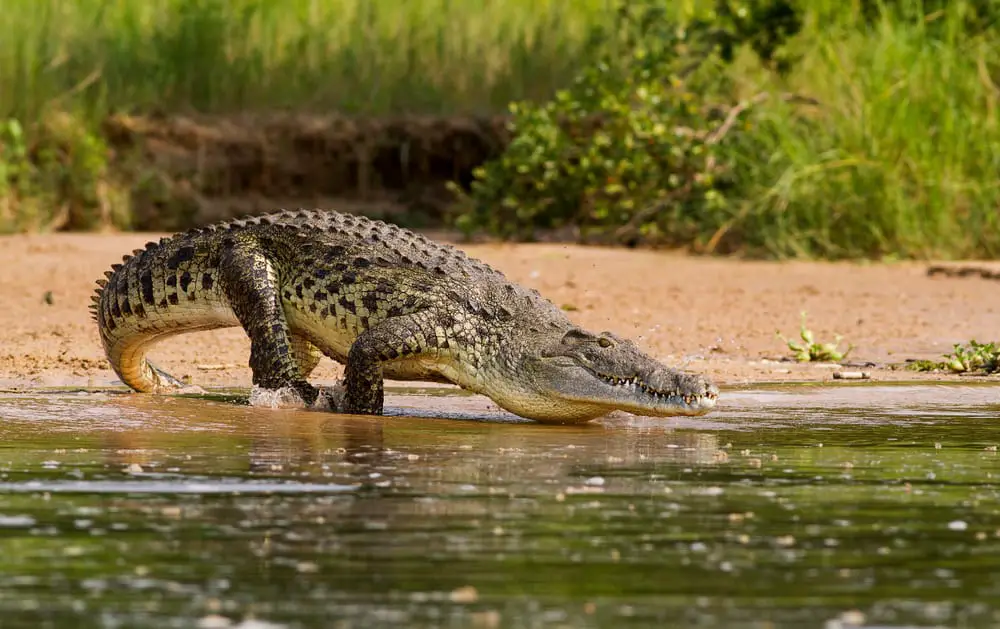
The Nile crocodile is found in Africa, south of the Sahara Desert, and much like alligators live in freshwater swamps, marshes, lakes, rivers, and streams of the Nile basin, Madagascar, and sub-Saharan Africa. Being apex predators, they can hunt animals up to twice their own size, which includes fish and invertebrates for younger crocodiles, and pretty much any animal as well as carcasses for bigger crocodiles, unlike alligators, and this contributes to them being able to grow as long as 12.6 ft, weigh as much as 551 lb, and live as long as 100 years.
They are usually more active at night, preferring to spend the night in the water, and adult males assume the position of aggressive protectors as adult females stay in their nesting areas to protect their nest and their young.
New Guinea Crocodile
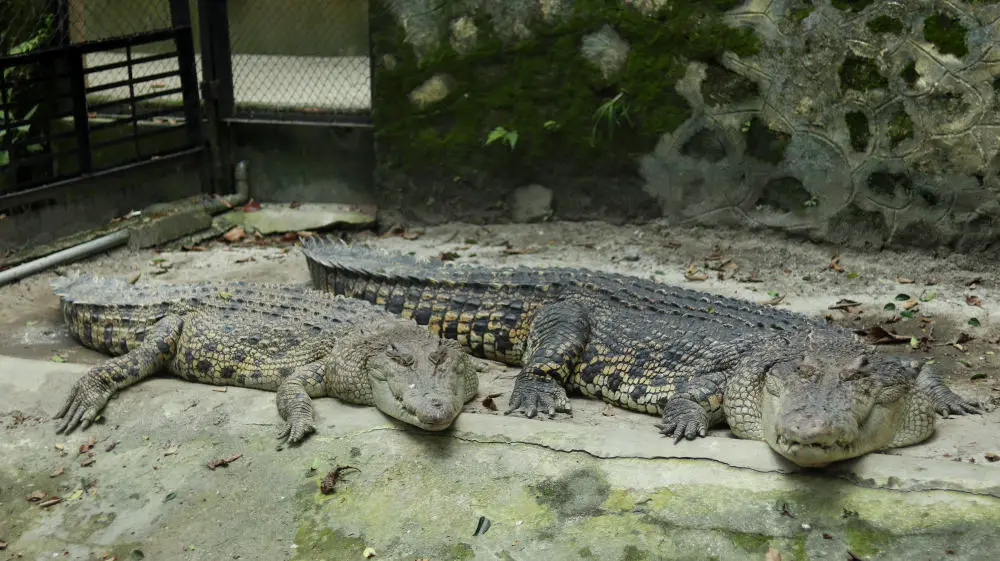
Smaller than the average alligator, the New Guinea crocodile can be found north of the Indonesian provinces on the island of New Guinea, and are similar to alligators because they prefer a habitat of freshwater swamps, lakes, and marshes. They are carnivores, and feed on frogs, crabs, shrimps, fish, birds, and medium-sized mammals, and can grow as long as 10.2 ft, weigh as much as 440 lb, and can only live up to 24 years, a considerably shorter lifespan than most other crocodilians.
These crocodiles are mostly aquatic, nocturnal, and spend most of their day underwater, with their eyes and nostrils above the surface of the water.
Mugger
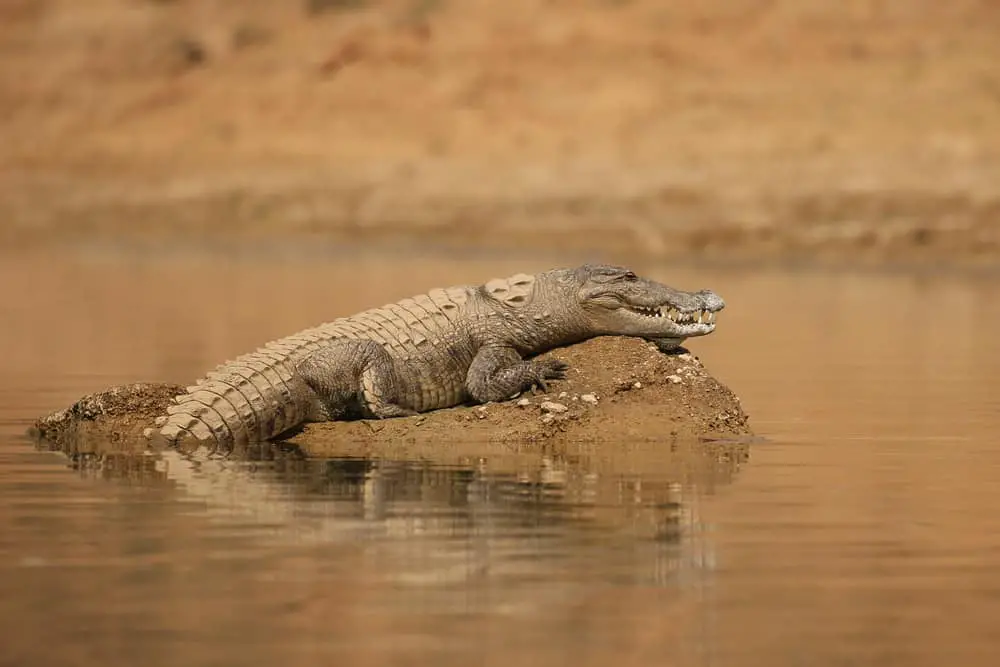
Known for its broad snout, the mugger crocodile is found from southern Iran to the Indian subcontinent, and different from alligators, they inhabit artificial ponds, rivers, lakes, and marshes. They have a taste for prey similar to alligators as they are known to consume fish, snakes, turtles, birds, and an array of mammals, and they can grow as long as 10 ft, weigh as much as 700 lb, and can live up to 30 years.
They are very social and territorial and are unique from other crocodiles as they use burrows for thermo-regulation to help with hot and cold periods of the day.
Estuarine Crocodile
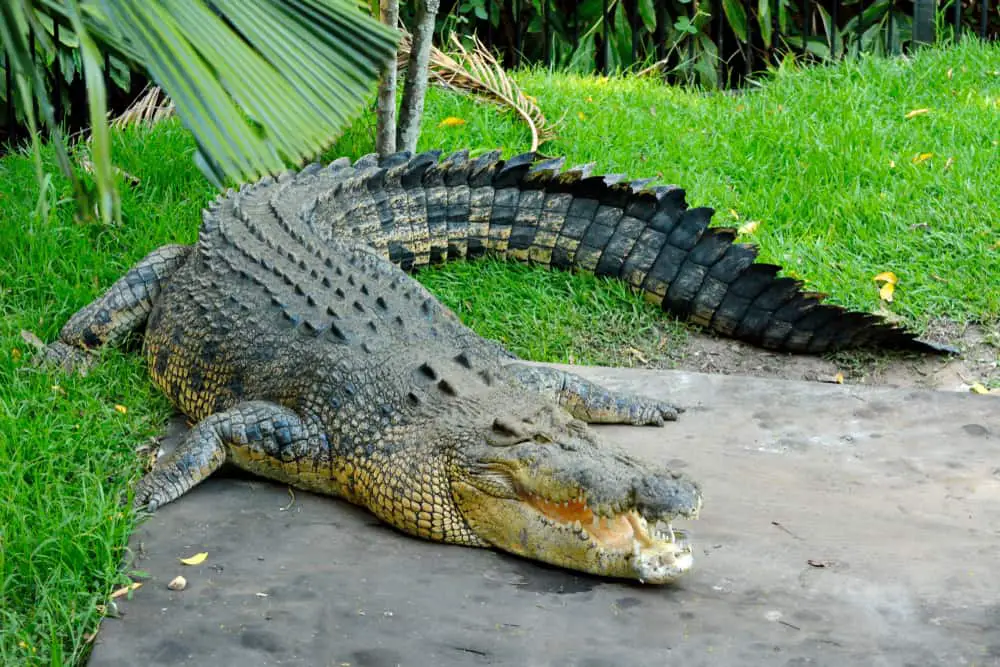
Found in South Asia and the estuaries of Australia, this crocodile is the largest reptile in the world and they also prefer freshwater rivers, wetlands, and coastal waters. Like many other crocodilians, their diets change with age, and they enjoy fresh and saltwater fish, crustaceans, mollusks, mammals, and birds, and can grow much bigger than alligators, getting as long as 20 ft, weighing as much 2,900 lb, and having a life expectancy of up to 70 years.
They are very fast over short distances in both water and on land, despite appearing clumsy and bulky, and are like alligators as they are aggressive and attack when provoked.
Cuban Crocodile
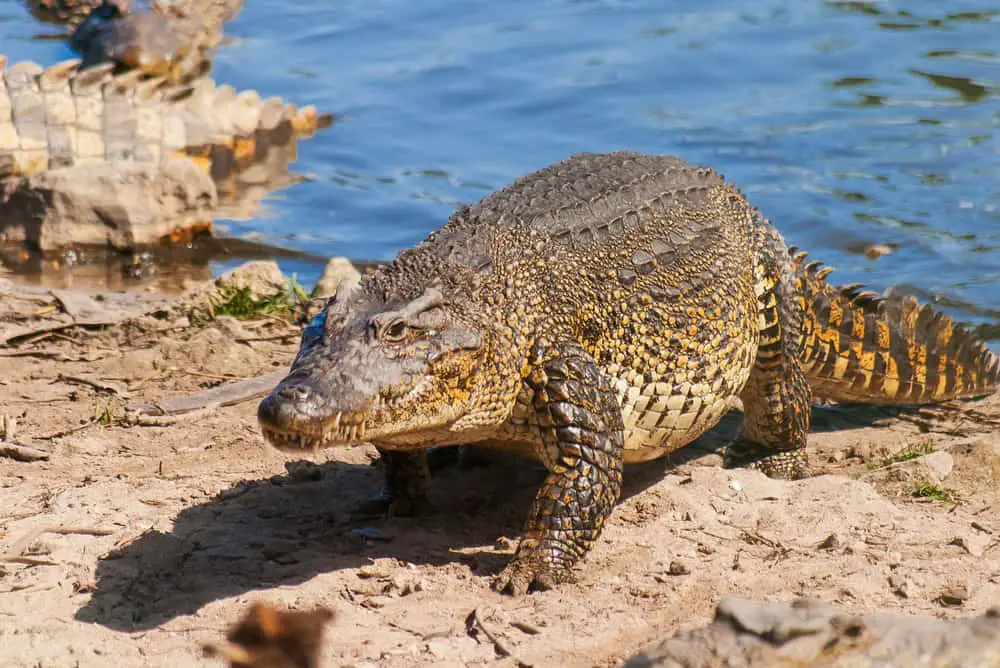
The Cuban crocodile is highly endangered and can be found in Cuba’s Zapata Swampand and the Isle of Youth, with a habitat of freshwater swamps, marshes, and rivers. Like alligators, they are carnivores and mainly eat fish, turtles, and mammals, and are smaller than alligators, growing to be as long as 7.5 ft, weigh as much as 180 lb, and only live for up to 18 years.
They are considered to be very intelligent, which actually makes this crocodile more vicious and lethal than other crocodiles.
Siamese Crocodile
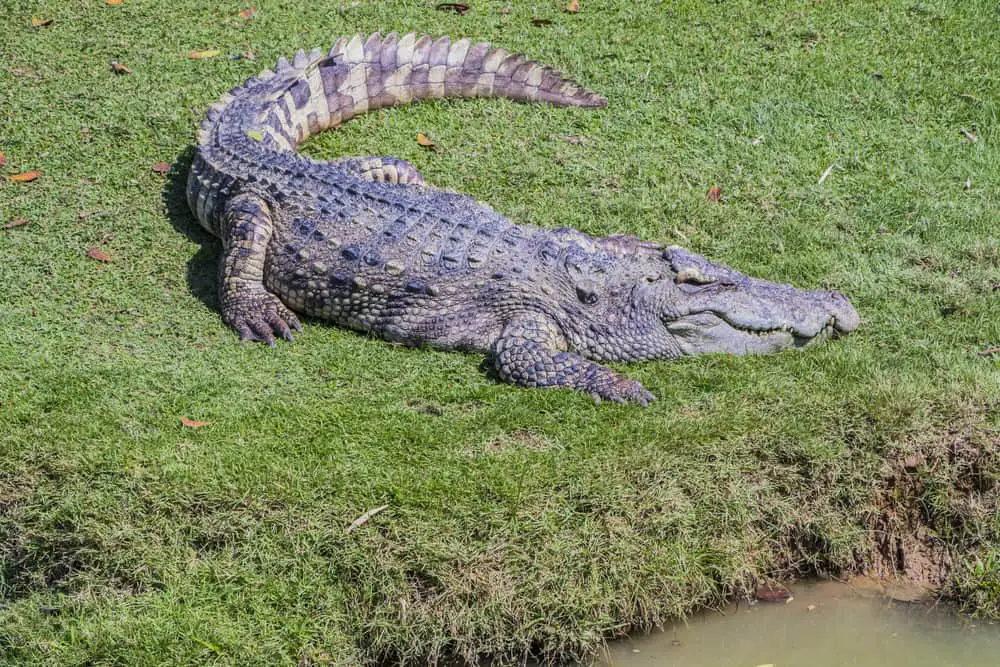
The Siamese crocodile is considered to be critically endangered and native to East Malaysia, Indonesia, Laos, Brunei, Thailand, Myanmar, Vietnam, and Cambodia, and like alligators, prefer freshwater lakes, rivers, marshes, and swamps. They have a good variety of preferences for their diet which consists of snakes, small mammals, fish, amphibians, lobster, and crab, and they are considerably smaller than alligators, only growing as long as 6.9 ft, weighing as much as 154 lb, and only living for up to 22 years.
They are typically not aggressive but can be a danger to humans and are considered to be the most advanced of the surviving reptiles with characteristics that are similar to mammals.
African Dwarf Crocodile
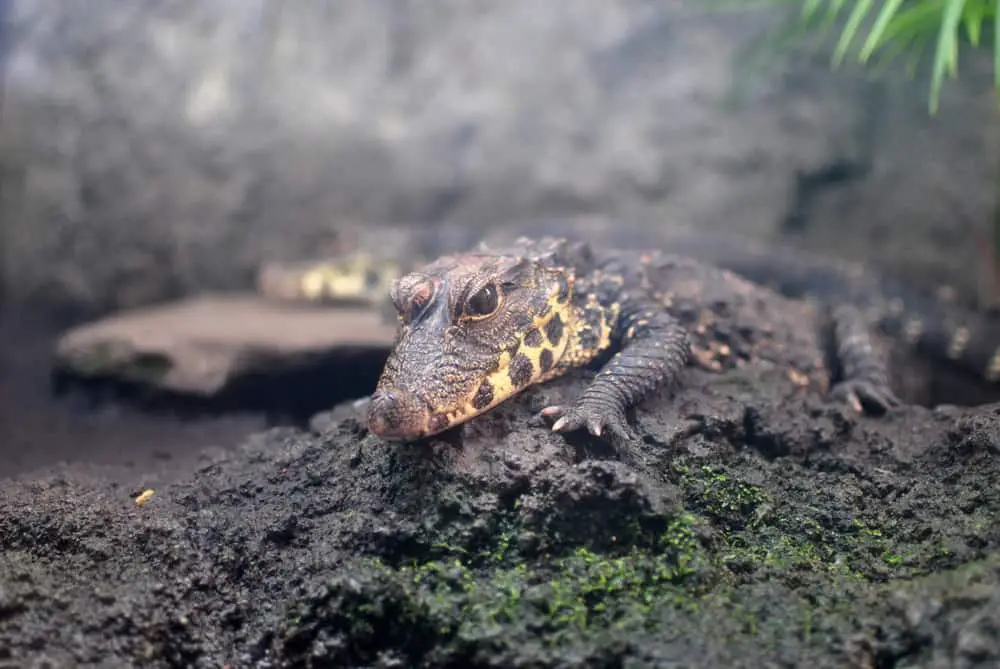
As the name suggests, this crocodile can be found in Central Africa and all across regions of Sub-Saharan West Africa and enjoys a subtropical habitat of lakes, rivers, and ponds. They are considered to be generalist predators and enjoy a diet of frogs, bats, insects, lizards, gastropods, crabs, fish shrews, and birds, and as dwarfs, they are a lot smaller than alligators as they can only grow as long as 6.25 ft, only weigh as much as 70 lb, and live for up to 75 years.
They are similar to other reptiles and alligators because they like to be in the sun to warm up, and find shade or get into the water to cool down, and they are different from most crocodilians because they can climb logs and low branches to enjoy the sunlight.
False Gharial
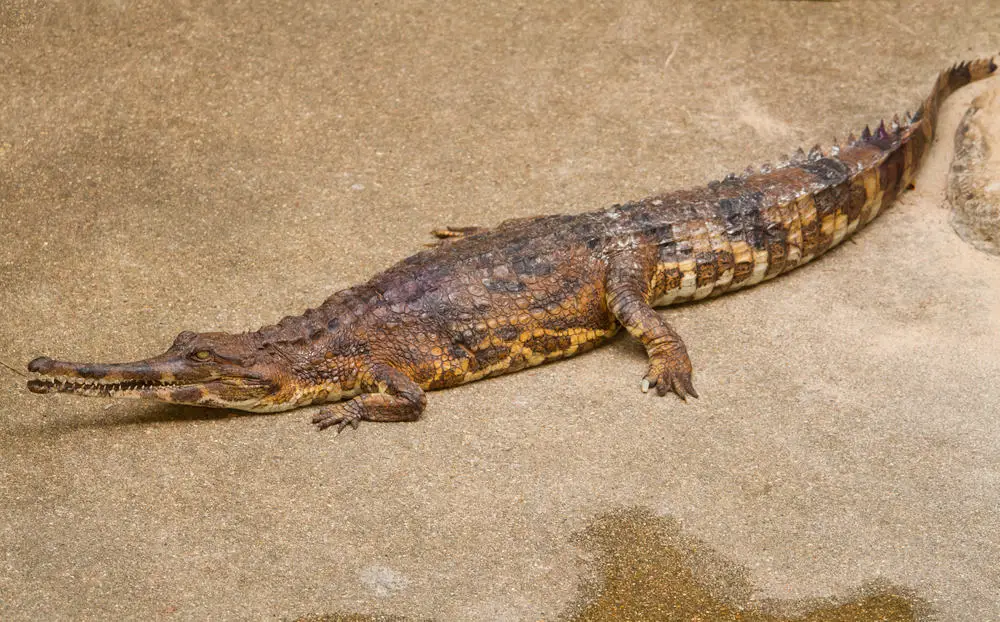
Known for their thin snouts, the false gharial is extinct from Singapore and Thailand, but can still be found in Indonesia, Peninsular Malaysia, and Sarawak, and enjoy a freshwater habitat of flooded forests, swamp forests, lakes, peat swamps, and blackwater springs.
They are carnivores like alligators, and have a diet of reptiles, fish, birds, and the probiscus monkeys, and can grow as long as 16.4 feet, weigh as much 462.5 lbs, and live as long as 80 years. They are able to close their throats and still breathe underwater, and although they are typically submerged underwater for about 15 min, they are able to be submerged for up to 2 hours if they feel threatened.
Broad-Snouted Caiman
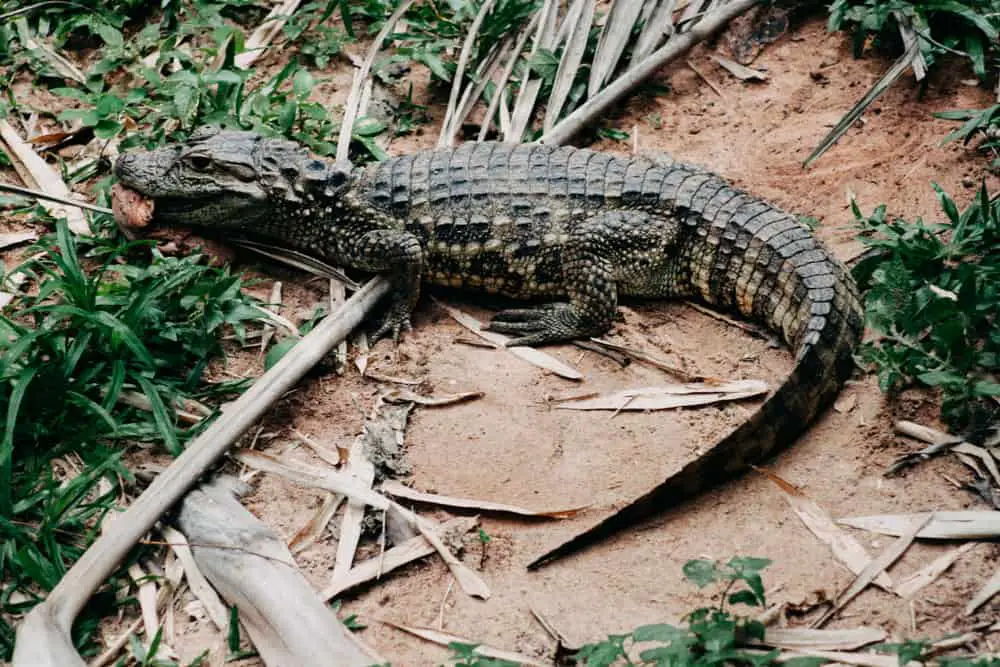
This middle-sized caiman reptile is a member of the Animalia Kingdom of order Crocodilia and can be found in South Central and Eastern America, and unlike alligators, enjoy being in a habitat of saltwater bodies, marshes, swamps, and Mangroves. When they are younger, their diet mainly consists of insects, and as they grow to become adults, they enjoy a diet of fish, birds, and reptiles, and can grow to be as long as 6.5 ft, weigh as much as 175 lb, and only live as long as 17 years.
They are considered to be members of the alligator family, and much like alligators, they are ectothermic, and depend on external environments to help regulate their body temperature, and the heat is absorbed through their skin and into the blood.
Yacare Caiman
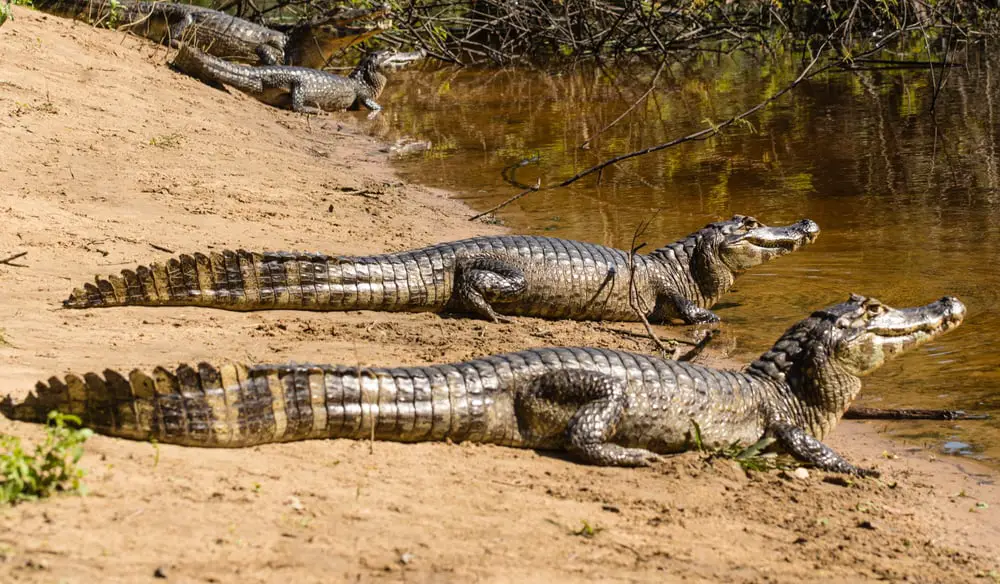
Sharing many characteristics with the broad-snouted caiman, the yacare caiman can be found in parts of central South America, including Uruguay, northeastern Argentina, eastern Bolivia, southeastern Peru, the rivers of Paraguay, and central/southwest Brazil, and prefer a semi-aquatic habitat of wetlands, lakes, and rivers, and unlike alligators, are able to adapt to a variety of habitats.
Their diet mainly consists of aquatic invertebrates (snails in particular), but like alligators, they also enjoy occasionally eating snakes and fish, and they can grow to be as long as 9.8 ft, weigh as much as 128 lb, and can live as long as 50 years. They are generally solitary animals that only congregate during mating season, and they are fierce predators who catch their prey by lying in still water and attacking when their prey approaches the shore.
Black Caiman
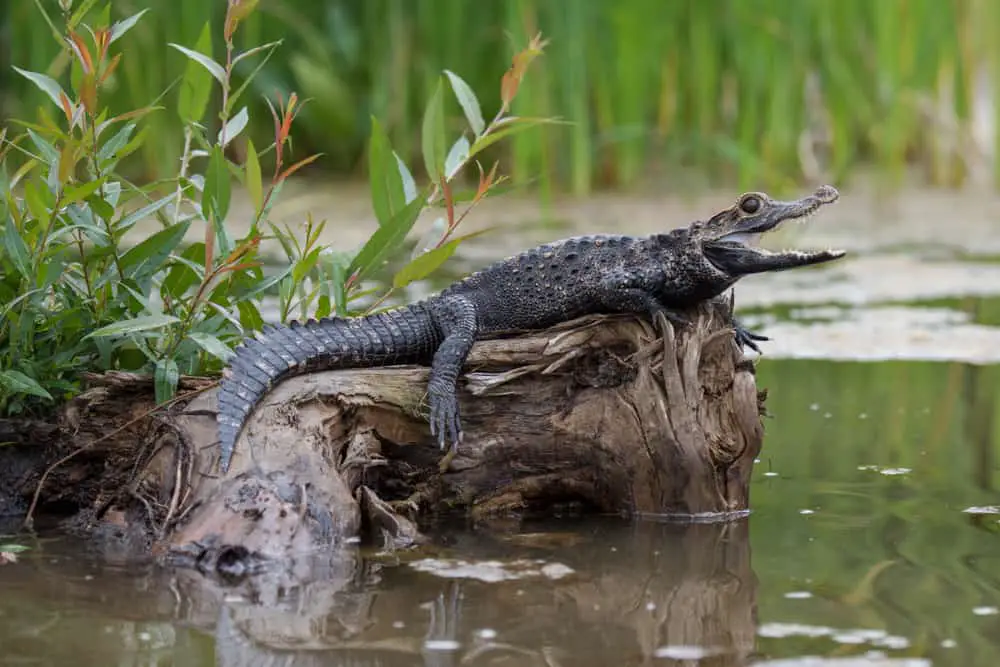
Overlapping in territory range with other caiman species, the black caiman can be found in South America and are typical members of the ‘Alligatoridae’ family, so like alligators, they enjoy a habitat of freshwater streams, rivers, flooded savannahs, lakes, and wetlands.
They are typical carnivores and eat a diet of mainly fish as well as turtles, capybara, cats, deer, and dogs, and can grow to be as long as 14.1 ft, weigh as much as 880 lb, and live as long as 80 years. They are extremely similar in appearance to American alligators, coexist without being competitive amongst each other, are considered to be very intelligent, and are very patient while hunting for their prey.



